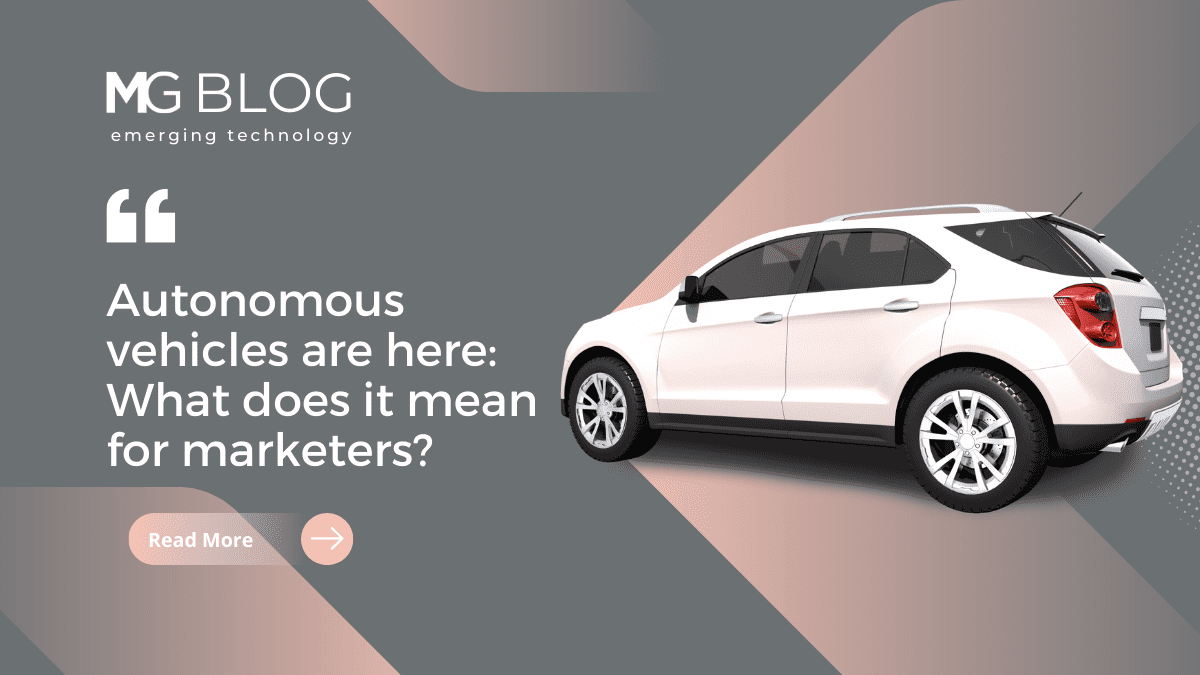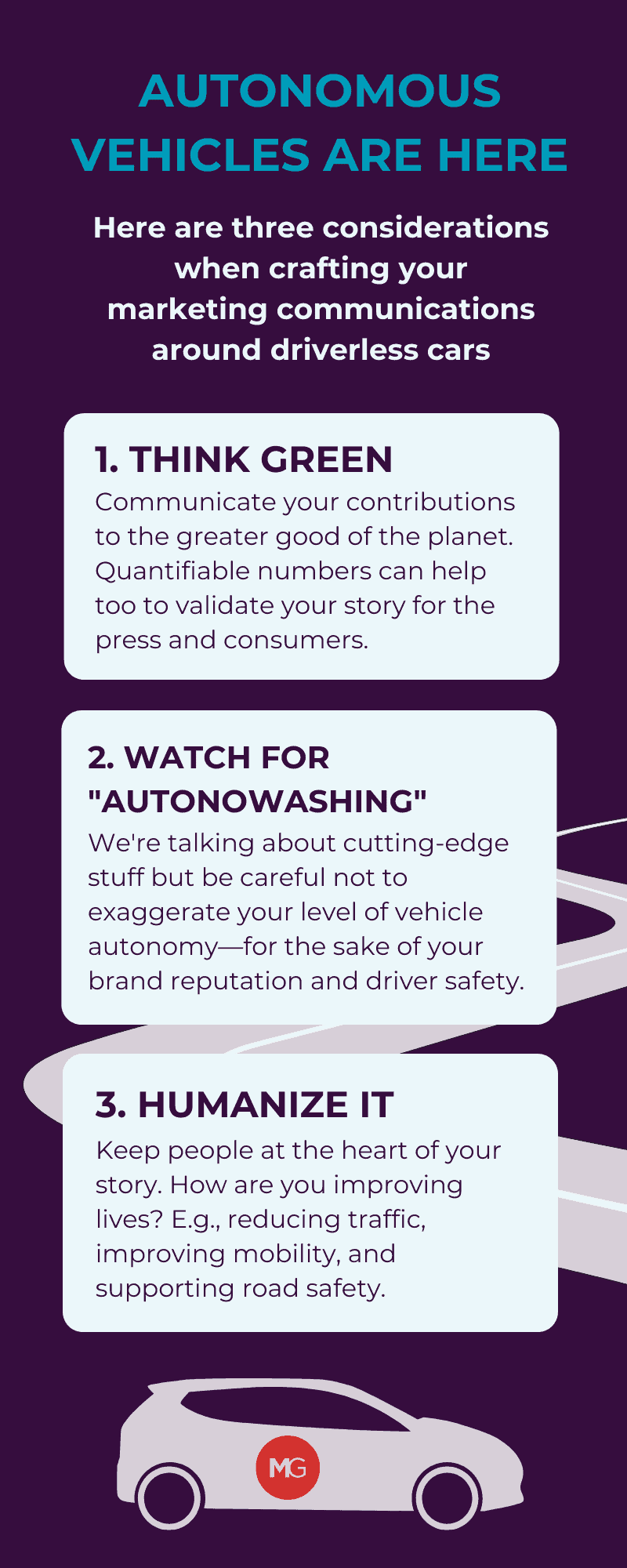
Don’t be too surprised next time you hail a ride or order groceries and find there’s no actual driver behind the wheel. In cities around the world, emerging players in autonomous vehicles (AVs) are piloting programs to test the readiness of AV technology, as well as what life would be like in a driverless future. We’re seeing AV pilots for multiple use cases, including:
- Robotaxis: In January 2022, General Motors-backed startup Cruise opened a sign-up page for people in San Francisco to be the first passengers to experience its robotaxi service. Ford and Lyft have launched similar ridesharing programs in Miami, as has Intel with Mobileye in Paris.
- Food delivery: The startup Nuro has become a go-to partner for driverless food and grocery deliveries among household names like Domino’s, Chipotle, and Walmart. Nuro is already three years into a pilot in Houston with grocery chain Kroger—with plans to expand service coverage in the region.
- Autonomous trucking: In February 2022, logistics leader C.H. Robinson announced a collaboration to introduce Alphabet-owned Waymo’s autonomous trucks to transport freight across a 240-mile route between Dallas-Fort Worth and Houston.

With more pilots expected and automakers advancing towards personal autonomous vehicles, the technology will only continue to proliferate, and it could soon become a ubiquitous part of our lives. As tech marketers, we have the amazing opportunity to share stories about how these emerging technologies are shaping the future of transportation and mobility. There are three key considerations for crafting your marketing communications around driverless vehicles.
1. Think green.
In a McKinsey survey, 66% of all respondents and 75% of millennial respondents reported that they consider sustainability when making purchases. In turn, companies across industries are prioritizing how to employ more environmentally friendly practices and communicate their contributions to the greater good of the planet. For instance, it’s been noted that self-driving vehicles can eliminate aggressive driver behaviors like excessive acceleration and braking that burn more gas and cause air pollution.
Consider incorporating green elements into your messaging that demonstrate the positive impact of your technology and services on the environment. Conducting studies and having quantifiable numbers—such as the amount of carbon dioxide emissions your company has reduced—can validate your story in the eyes of reporters. But be sure to do your due diligence to avoid suspicions of “greenwashing,” i.e. presenting a product as more eco-friendly than it really is.
2. Be mindful of autonowashing.
Sorry, autonowashing isn’t about cars that can wash themselves (maybe that will come next). It’s about a practice by some automakers—and drivers—of exaggerating the level of autonomous technology within their consumer vehicles. In fact, there are multiple levels of vehicle autonomy:
- Level 1, the car can control the steering or vehicle speed on its own, with driver supervision.
- Level 2, the vehicle can steer, accelerate, and brake in certain circumstances but the driver needs to take action such as at traffic lights or when presented with hazards.
- All the way up to Levels 4 and 5, which don’t require humans to take the wheel at all under most or all conditions, respectively.
Tesla’s Autopilot function has come under question because its branding and messaging imply it’s capable of Level 4 automation when, in reality, it is only classified as Level 2. Even now, the Autopilot page of Tesla’s website boasts full self-service capabilities. The automotive industry has noted this could pose risks of drivers paying less attention to the road while overtrusting their vehicle’s self-driving features. As marketers, we want to accurately express the capabilities of cutting-edge technology and should be conscious of the words we use and their ramifications to a brand and end-users.
3. Keep people at the heart of the story.
While going driverless seems to be about eliminating the human part of the transportation equation, the stories that will resonate with the press and consumers alike will ultimately tap into how AVs benefit people’s lives. The Coalition for Future Mobility notes that wide-scale AV adoption could reduce traffic congestion (who wouldn’t love that?), afford people with mobility challenges greater independence, and lead to greater road safety.
When Waymo launched its robotaxi service in Phoenix, Arizona, and was featured on the Today Show, the Google sister company focused its story on the safety benefits of its AVs. The coverage highlighted how Waymo’s robotaxis enable social distancing while commuting during the pandemic; can reduce instances of drunk driving; and can even make smarter, life-saving maneuvers thanks to machine learning. Speaking directly to safety concerns was a smart move on Waymo’s part, given many people understandably may still feel cautious about entrusting their lives to a driverless vehicle.
If the growing number of autonomous vehicle pilots is any indication, the future of autonomous driving is bright—and progress is accelerating at breakneck speeds. We must keep a pulse on new developments and evolve our communications to speak to what matters to people in a driverless future.
Looking to stand out in your rapidly developing technology space? Learn more about how our Emerging Technology Group can help!
